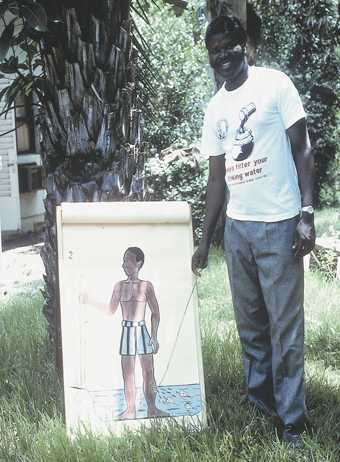5.4.2 Community participation in the eradication programme
The important health education messages have largely been delivered by one or two volunteers from each village. They are each given basic training and provided with a few educational aids, e.g. posters, leaflets and slogans on T-shirts (Figure 21), to raise awareness and promote understanding of how the guinea worm larvae are transmitted and how to prevent the transmission of infection.
Community participation in the eradication programme is central to its success – without it, no progress would have been made. It demonstrates that combined community action can persuade individuals to change behaviour that damages their health. The success of this low-cost approach has been striking, not only in reducing the number of cases to the threshold of eradication, but also in empowering local people and reducing poverty and the loss of education due to the disabling effects of guinea worm disease.

